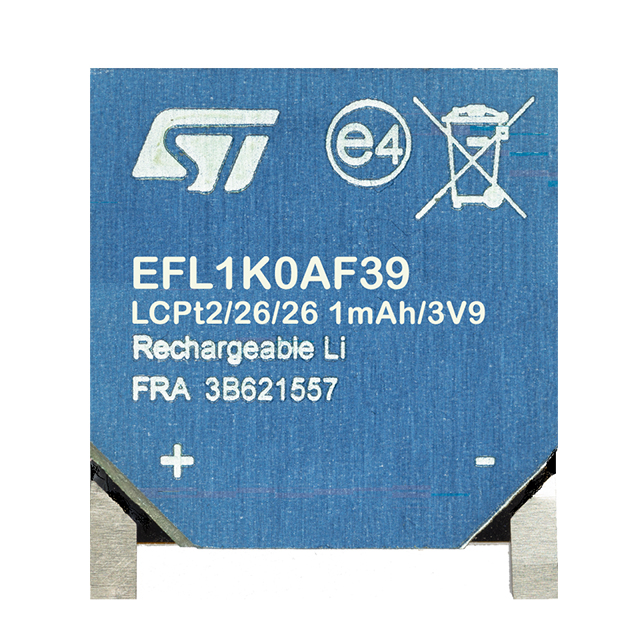EnFilm™ Series, Batteries Rechargeable (Secondary)
Results:
4
Manufacturer
Series
Capacity
Termination Style
Size / Dimension
Battery Chemistry
Battery Cell Size
Voltage - Rated
Results remaining:4
Applied Filters:
EnFilm™
About Batteries Rechargeable (Secondary)
Rechargeable batteries, also known as secondary batteries, are a type of electrochemical storage cells that operate based on reversible chemical reactions. Unlike primary batteries, which are single-use and cannot be recharged, rechargeable batteries can be replenished and reused multiple times before needing to be disposed of. Compared to primary batteries, rechargeable batteries typically store less energy in a given space. They may also exhibit higher levels of self-discharge, meaning they gradually lose their charge over time, especially when not in use. This makes them less stable for long-term storage compared to primary batteries. Although rechargeable batteries often have a higher upfront cost compared to primary batteries, their ability to be recharged and reused multiple times makes them a more cost-effective choice for many applications in the long run. By eliminating the need for frequent battery replacements, rechargeable batteries offer both economic and environmental benefits. It is worth noting that while the term "battery" technically refers to an assembly of multiple individual cells, it is commonly used to describe a single cell as well. This is due to the widespread convention of referring to a single rechargeable cell as a "battery." Rechargeable batteries find applications in various devices, such as portable electronics, power tools, electric vehicles, and renewable energy systems. Their ability to be reused numerous times makes them a convenient and sustainable power source for a wide range of everyday and specialized applications.


